![]()
19. Acoustics
Apprendix
Summary of Noise Standard
|
Noise source Noise Standard Users |
Aircraft Noise
(Noise Eposure Forecast : NEF) |
Helicopter
Noise Lmax dB(A) |
Road Traffic
Noise L10 (1hour) dB(A) |
Rail Traffic
Noise |
Fixed Noise Source | ||
| Kai Tak
Airport |
New Chek
Lap Kok Airport |
||||||
| All domestic premises including temporary housing accomodation | 30 | 25 | 85 | 70 | (a) Leq(24hr)
= 65dB(A)
and (b) Lmax (2300-0700) = 85 dB(A) |
(a) 5dB(A) below the appropritate Acceptable Noise Levels
shown in Table 3 of the Technical Memorandum for the Accessment of Noise
from places Other than Domestic Premises, Public Places or Construction
Sites and
(b) the prevailing background noise levels. |
|
| Hotels and hostels | 30 | 25 | 85 | 70 | |||
| Offices | 30 | 30 | 90 | 70 | |||
| Educational institutions including kindergartens, nurseries and all others where unaided voice communication is required. | 30 | 25 | 85 | 65 | |||
| Places of public worship and courts of law | 30 | 25 | 85 | 65 | |||
Hospitals, clinics, convalenscances and homes for the aged: -
|
30 | 25 | 85 | 55 | |||
| Amphitheatres, and auditoria, libraries, performing arts centres and Country Parks | depend on use, extent and construction | depend on locations and construction | |||||
Notes : -
Speech Interence Levels (average of contaves centred on 1000, 2000, 4000 Hz) in dB re 2x10-6 Pa.
| Distance between talker and listener ( m ) | Voices level normal | Raised | Very loud | Shouting |
|
0.25 |
70 |
76 | 82 | 88 |
|
0.5 |
65 |
71 | 77 | 83 |
|
1.0 |
58 |
64 | 70 | 76 |
|
1.5 |
55 |
61 | 67 | 73 |
|
2.0 |
52 |
58 | 64 | 70 |
|
3.0 |
50 |
56 | 62 | 68 |
|
5.0 |
45 |
51 | 57 | 63 |
Recommended range of values for relatively steady background sound levels
| Listening to music/speech | Concert halls, large theatres, opera houses
Multi-purpose halls, small theaters Courtrooms, Conference rooms, Debating chambers Small Rooms, e.g. classrooms |
NR:
15-20 20-25 25-30 25-35 |
| Sleep and rest
Study and Consulation Eating |
Bedrooms, living rooms, lounges, hospital wards
Libraries, executive offices, surgeries Restaurants, dining rooms Cafeterias |
25-30
25-35 25-35 below 45 |
| Desk work with telephone use | Standard offices | 30-40 |
| Repetitive tasks needing limited though | General officess
Large kitchens, noisy computer suites |
35-40
below 50 |
| Specific ancillary areas | Waiting
Dressing/Changing Circulation Toilets Car Parks |
35-40
below 40 30-40 35-45 below 55 |
| Out of doors | In the street, in shopping precincts | below 55
( lower if external background levels are low ) |
*Studio recording and audiometry are normally subject to specific client requirements- NR20 or less.
Notes :
Minimum levels refer in particular to middle and high frequenies. Levels must be adjusted downwards and the background noise contains repitition/rhythm, information, pure tones, etc.
Typical changes in sound insulation with frequency for single partitions
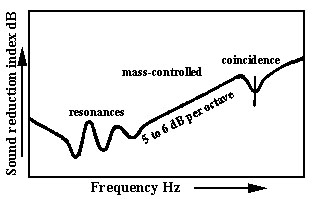
The 'Mass Law' for sound insulation
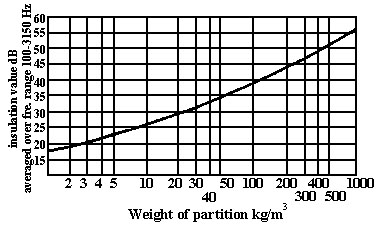
Coincidence
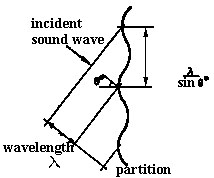
Noise criteria curves ( N.C. )
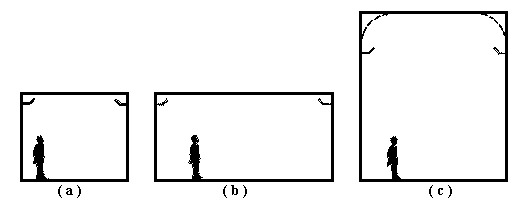
Noise rating Curves
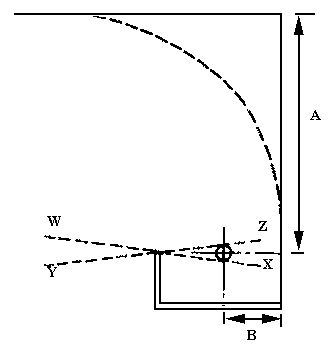
Impact insulation class contours
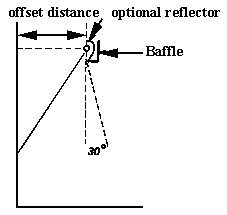
Notes :
Sound transmission class ( STC )

Notes: Deviation allowance within 16% octave bands 125-4000 Hz
|
Hz |
|||||||
| Materials | 63 | 125 | 250 | 500 | 1k | 2k | 4k |
| 1. Brickworks, plain or painted | 0.05 | 0.05 | 0.04 | 0.02 | 0.04 | 0.05 | 0.05 |
| 2. Blockwork ( clinker concrete ) unplastered, unpainted | 0.1 | 0.2 | 0.3 | 0.6 | 0.6 | 0.5 | 0.5 |
| 3. Concrete, tsoled stone or ganolithic | 0.01 | 0.02 | 0.02 | 0.02 | 0.03 | 0.04 | 0.04 |
| 4. Plaster, lime or gypsum- on lath or plasterboard are shallows air space(<75mm) | 0.1 | 0.25 | 0.15 | 0.1 | 0.00 | 0.04 | 0.05 |
| 5. Plywood or hardboard panel mounted over 25mm air space against solid backing with porous absorbent in air space | - | 0.4 | 0.25 | 0.15 | 0.1 | 0.1 | 0.05 |
NCR : -
The mean of absorption coefficients over th efour pctaves on 250, 500, 1000 and 2000Hz.
The way of estimating the value of a material for mid-frequency broad band noise reduction by absorption.
Reference :
Datas, tables & diagrams are extracted from the following :-